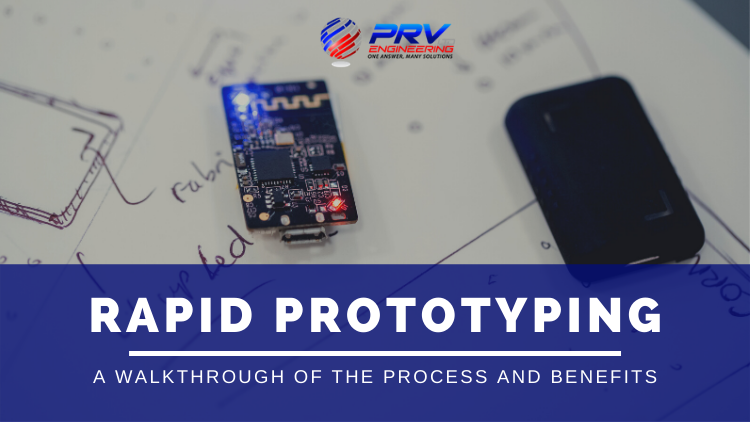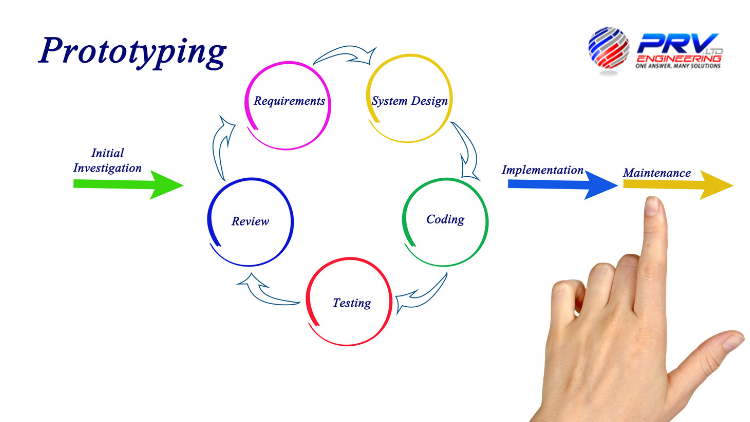
In our current technology-driven world, innovation has changed how brands and businesses operate. Many traditional development strategies have shifted toward implementing new manufacturing technologies to ensure sustained competitiveness, including rapid prototyping and software development. Many start-ups and established businesses are fast adopting these modern methodologies considering all the benefits.
What Does Rapid Prototyping Mean?
As the name suggests, rapid prototyping (RP) refers to the fast fabrication of a specific part, model or assembly. This process usually involves using 3D computer-aided design (CAD) where the assembly is usually done through additive manufacturing or 3D printing.
Although rapid prototyping includes various manufacturing technologies, most utilise a layered additive manufacturing approach. Other technologies used in rapid prototyping are high-speed machining, casting, moulding and extruding.
What Does The Process Involve And How Does It Work?
A prototype is used to validate the possibilities that a certain part or product can solve a specific problem. The rapid prototyping process has to be real enough so potential users can interact with it and provide vital feedback.
If users report negative feedback on the prototype, the company have potentially saved a considerable amount of time and resources as that product or service would have failed in a real-world scenario. When they give positive feedback, the company knows they are on track which helps in the advanced product development phase.
Many industries rely on rapid prototyping as it offers a wide range of benefits. The main areas of application include the automotive industry, maritime, aerospace and defence, robotics, energy and consumer products.
Types Of Rapid Prototyping In Product Design
Prototypes are categorized on the degree of accuracy required which refers to ‘Fidelity’. A prototype doesn’t always have to look exactly like the final product and can vary based on what the company want to achieve. The level of accuracy ranges from low to high Fidelity which refers to the appearance, functionality, size and user interface. Here’s a brief overview of the different Fidelity types.
Low Fidelity prototypes are very simple and often quickly produced to testing purposes. It’s often used to test the concept like cardboard mock-ups and paper sketches or consumer products.
High Fidelity prototypes look and work exactly like the final product. You will find these prototypes in industries where absolute precision and accuracy is required using the best additive manufacturing technologies. These sectors include automotive, robotics, aerospace and defence.
Recommended: ‘Additive Manufacturing In The Automotive Sector’
Selective Laser Sintering (SLS)
Selective laser sintering is an additive manufacturing technique that uses lasers for sintering powdered materials such as polyamide or nylon. The laser automatically points in the space defined by a 3D model and then binds the material together to create a solid structure.
Benefits Of Rapid Prototyping
One of the biggest challenges most product designers face is not being able to properly explain a design concept from digital models. Even with today’s exceptional 3D and CAD technologies, it’s still a daunting task which is why rapid prototyping can help prove the concept. Here are the main benefits of rapid prototyping in product design and development.
- Realistic proof of concept as it goes beyond simply a virtual representation
- With a physical model at their disposal, designers can easily and quickly incorporate changes after receiving feedback
- Being an iterative process, the design is further improved which builds confidence among designers and consumer
- Rapid prototyping is extremely cost-effective and reduces time spent on developing patterns, moulds and bringing in specialised tools
- Less material waste thanks to selective laser melting
- You can easily identify faults and usability issues as the prototype looks and works like the real product
Final Thoughts
Rapid prototyping allows you to identify defects in the design before going into mass production. Due to the similarities between a prototype and the real product, companies can easily perform a physical strength or usability test. It’s a great way to avoid any risk that may arise later during the manufacturing process.
This technology has come a long way and is gaining popularity among manufacturers and engineering designers across the world. Rapid prototyping remains one of the fastest and most accurate ways of realising the potential of a finished product.
Considering all the incredible benefits, it’s no surprise that more companies are adopting new prototyping technologies. It delivers a far higher Fidelity from the conceptualized product compared to conventional paper prototyping using CNC machines, for example.
Precision Engineering And Fabrication Services At PRV Engineering
PRV Engineering works closely with several industries including aerospace, defence, oil and energy, construction and rail. Working with basic mild steels to the more exotic Monel, Inconel, Hastelloy and Titanium, we cater for one-offs, large batch production and Rapid Prototyping.
Our state-of-the-art facility in Pontypool provides CNC machining, 5-Axis machining, waterjet cutting, deep hole drilling and structural steel fabrication services among others. If you have any questions about our range of products and service, please contact us via the website. You can also find us on Twitter, Facebook, YouTube or LinkedIn.


 Mail:
Mail: 




